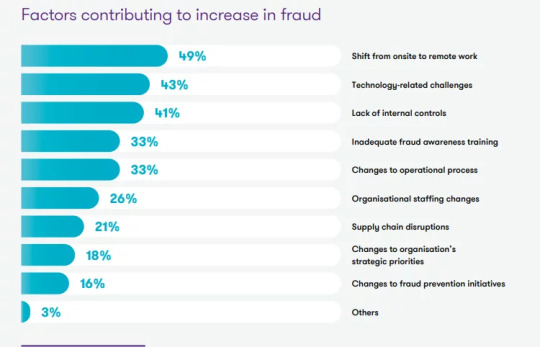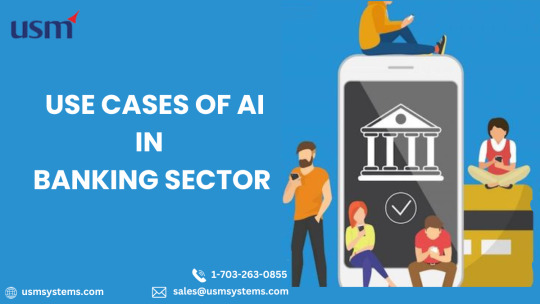#AI in fraud detection
Explore tagged Tumblr posts
Text
How to Use AI to Predict and Prevent Cyberattacks
In today’s rapidly evolving digital landscape, cyberattacks are becoming more frequent, sophisticated, and devastating. As businesses and individuals increasingly rely on technology, the need to bolster cybersecurity has never been more critical. One of the most promising solutions to combat this growing threat is Artificial Intelligence (AI). AI can enhance cybersecurity by predicting,…
#AI cybersecurity solutions#AI for cybersecurity#AI in fraud detection#AI threat detection#Check Point Software#Cisco#CrowdStrike#Darktrace#FireEye#Fortinet#IBM Security#machine learning in cybersecurity#malware detection with AI#McAfee#Microsoft Defender#Palo Alto Networks#predict cyberattacks with AI#prevent cyberattacks with AI#Qualys#SentinelOne#Sophos#Trend Micro#Zscaler.
0 notes
Text
What is the role of AI in fraud prevention?

AI fraud detection isn’t just a theory; companies worldwide are using it. Fraudulent activities have grown into a complex threat, extending far beyond financial losses-they can erode customer trust, damage brand reputation, and result in costly regulatory penalties.
Fraud scams and bank fraud schemes resulted in $485.6 billion in losses globally last year, according to Nasdaq’s 2024 Global Financial Crime Report.
From safeguarding online transactions to protecting sensitive data, staying ahead of sophisticated fraudsters has never been more critical. Fortunately, artificial intelligence (AI) has emerged as a powerful technology.
By leveraging advanced machine learning algorithms and predictive analytics, AI identifies and mitigates threats with unprecedented speed and accuracy to continuously adapt new fraud tactics. This has positioned AI as an indispensable tool, safeguarding financial transactions and instilling confidence in businesses and consumers. Let’s explore the role of AI in making online transactions safer.
The rising threat of payment fraud to be aware of
Digital transactions are revolutionizing the financial landscape, and the menace of payment fraud is rapidly increasing. This presenting formidable challenges to enterprises, financial institutions, and individuals. As the proliferation of online transactions increases, so does the ingenuity of fraudsters, who relentlessly innovate to exploit the evolving intricacies of payment systems. The factors driving this growing threat are:
Expansion of digital payment platforms
Increased transaction volume
Use of AI by hackers
Regulatory challenges
Synthetic identity fraud

Impact on businesses and consumers
Fraud not only results in direct financial losses but also has broader implications:
Financial losses
Reputational damage
Operational disruptions
Increased costs
Let’s explore the types of fraudulent activities and expected loss:
Fraud Type: Global online payment fraud losses
Expected Loss: $91 billion
Date: 2028
Fraud Type: US eCommerce fraud totals
Expected Loss: $48 billion
Date: 2023
Fraud Type: Global eCommerce payment fraud losses
Expected Loss: $343 billion
Date: 2023 -2027
Fraud Type: Global AI fraud loss (conservative scenario)
Expected Loss: $1 trillion
Date: 2030
Fraud Type: Synthetic Identity fraud
Expected Loss: $23 billion
Date: 2030
Fraud Type: Credit card losses
Expected Loss: $43 billion
Date: 2026
Fraud Type: Total amount of regulatory fines against institutions for KYC failures (including money laundering)
Expected Loss: $5 billion
Date: 2022
3 key use cases of generative AI for the financial industry
The adoption of generative AI in financial sector makes a substantial impact in detecting financial fraud. It analyzes vast amount of data in real time, enhance security measures, and increase customer support and security.
Read more
The role of AI in fraud detection for increased precision and efficiency
Real-time transaction monitoring
AI offers significant advantages in fraud detection by analyzing vast amounts of transactional data in real time. Unlike traditional systems that rely on static rules and respond slowly to new threats, AI uses machine learning algorithms to identify patterns and anomalies, quickly recognizing suspicious activities. This capability for real-time monitoring allows for immediate intervention, preventing fraudulent transactions before they inflict damage.
Predictive analytics and pattern recognition
AI excels at identifying patterns within complex datasets, making it highly effective at predicting and preventing fraud. By analyzing historical data, AI models uncover subtle correlations and trends that might indicate fraudulent behavior. These predictive analytics capabilities allow AI to forecast potential fraud scenarios and implement proactive measures, thereby reducing the risk of fraud before it occurs.
Enhanced accuracy and reduction of false positives
A common challenge in fraud detection is false positives, where legitimate transactions are flagged as fraudulent. AI improves accuracy by analyzing a wider range of data points and context, allowing it to better distinguish between genuine and fraudulent transactions. This precision enhances security and reduces unnecessary disruptions, improving the user experience.
Behavioral biometrics
AI-powered behavioral biometrics is a cutting-edge fraud detection method that analyzes unique user behaviors like typing speed, mouse movements, and interaction patterns. By creating a behavioral profile for each user, AI can detect deviations that may indicate fraud, adding a layer of security that is hard for fraudsters to replicate and effective against account takeovers and identity theft.
How artificial intelligence in investment management will give you an edge
The key enterprises applications of AI in investment management are to scrape smartphone reviews from various websites and extract themes to highlight essential topic and trends.
How fraud detection using AI is making banking and financial transactions safer
Identifying fake accounts: AI detects synthetic identities or fake accounts created using a mix of original and fabricated information. It analyzes account behavior and background data, allowing banks to identify and prevent these fraudulent accounts from causing harm.
Preventing money laundering: Artificial intelligence analyzes transaction patterns to spot potential money laundering activities. It compares transactions against known laundering techniques and flags suspicious patterns for further investigation.
Phishing attacks: AI helps detect phishing attempts by analyzing email patterns and content to identify fraudulent messages that attempt to steal sensitive information. AI system filters the message and alerts the users to suspicious communications, reducing the risk of successful phishing attacks.
Credit card theft: The technology identifies patterns consistent with credit card theft, such as unusual spending or transactions from locations not previously associated with the cardholder. This real-time analysis allows banks to flag or block potentially fraudulent transactions.
Document forgery: AI tools can analyze documents for signs of forgery by comparing them with known genuine documents and identifying discrepancies. This helps to detect and prevent the use of forged documents for fraudulent purposes, such as opening fake accounts or applying for loans.
Fraudulent loan applications: AI analyzes loan applications for inconsistencies or red flags that might indicate fraud. By evaluating the application data against historical patterns and known fraud indicators, AI helps prevent fraudulent loan disbursements.
Unusual transaction patterns: AI can detect unusual transaction patterns that deviate from a user’s historical behavior, such as sudden large transactions or transactions in unusual locations. These anomalies are flagged for further review or automatic action.
The future of AI in fraud prevention
1. Enhanced detection capabilities
AI algorithms are becoming more advanced in analyzing vast amounts of data to detect anomalies and suspicious patterns. Machine learning models, particularly those utilizing deep learning, can recognize subtle deviations from normal behavior that traditional systems might miss. The ability to process and analyze data in real time enhances the accuracy of fraud detection and reduces the chances of false positives.
2. Adaptive learning
One of AI’s most significant advantages is its ability to learn and adapt. Fraud tactics are continuously evolving, and static fraud prevention systems can quickly become obsolete. AI-powered systems, however, use adaptive learning to stay ahead of emerging threats. By continuously training on new data and adjusting algorithms accordingly, AI can evolve alongside the fraudsters’ tactics, improving its effectiveness over time.
3. Behavioral analytics
AI in financial operations enhances fraud prevention by analyzing user behavior patterns. By establishing a baseline of normal behavior for each user, AI systems can detect unusual activities that deviate from the norm. For example, if a user who typically logs in from a specific location suddenly accesses their account from a different country, AI can flag this as a potential fraud risk and trigger additional verification steps.
Real-life use cases: AI preventing fraud enhances payment strategies
JP Morgan
The global financial leader, JP Morgan, has implemented an AI system known as DocLLM to enhance their fraud detection capabilities. This system leverages advanced natural language processing and machine learning techniques to swiftly analyze vast amounts of legal documents. In just a few seconds, DocLLM can sift these documents to identify inconsistencies, anomalies, and warning signs that might indicate fraudulent activities.
This proactive approach helps the bank mitigate risks, protect its assets, and maintain trust with its clients by preventing fraudulent transactions before they can cause significant harm.
Mastercard
Mastercard’s AI-based platform, Decision Intelligence, plays a critical role in fraud prevention. It uses generative AI to analyze cardholder spending patterns in real time, evaluating the likelihood of fraud for each transaction as it occurs.
The integration of AI technology has greatly enhanced the security of Mastercard’s payment network. The platform’s efficiency is evident, as it has already helped Mastercard “score and safely approve 143 billion transactions a year,” providing a robust layer of protection for cardholders and the company itself.
Capital One
Capital One has integrated AI into its customer service strategy through Eno, a virtual assistant launched in 2017. It is designed to interact with users via mobile apps, text messages, email, and desktop. It allows answering customer questions, sending fraud alerts, and handling routine tasks like paying credit card bills, tracking account balances, and checking transactions.
What sets Eno apart is its ability to communicate in a natural, human-like manner, even incorporating emojis into its responses. This makes interactions with the AI feel more personal and engaging, enhancing the overall customer experience while ensuring that essential banking tasks are handled efficiently and securely.
Autonomous AI Agents for Finance: The future is now
The future of finance is autonomous as AI agents help finance leaders focus on strategic tasks, drive innovation by identifying new opportunities, influence change, align goals, and drive value.
Read more
Leverage Softweb’s AI-driven solutions for fraud detection and prevention
In 2024 and beyond, banks and financial institutions are set to enhance their fraud prevention strategies by investing in advanced analytics and harnessing the transformative potential of AI. This approach will boost efficiency and effectiveness in detecting fraud.
Adopting a risk-based methodology, managing alerts, evaluating various scenarios, and responding quickly to emerging threats can create a secure environment for digital transactions. Softweb’s AI consulting services offer end-to-end solutions such as:
Strategic development to deployment and maintenance
Analysis of market trends
Risk management and compliance
Fraud detection and prevention strategy
Customer segment and personalization
Contact our AI consultants to discuss your use case.
Originally published at softwebsolutions on August 30, 2024.
#AI-driven solutions#ai consulting#AI in fraud prevention#AI in fraud detection#AI in financial industry#AI consulting services
0 notes
Text
#AI in workplace#ai in industries#AI in different industries#ai in manufacturing#AI in risk management#AI in fraud#ai in fraud detection#ai use cases#use cases for ai#ai use cases in healthcare#ai use cases in finance#ai automation
0 notes
Text
10 Innovative Business Ideas That You Can Start Today using AI
Are you tired of the same old business ideas? Are you looking for something innovative and exciting that can set you apart from the competition? Look no further than AI!
Artificial Intelligence (AI) is transforming the business world, and there are countless opportunities for entrepreneurs to capitalize on this emerging technology.
Here are 10 innovative business ideas that you can start today using AI:

Virtual personal shopping assistant: Use AI to create a personalized shopping experience for your customers.
Predictive analytics for sales: Use AI to predict sales trends and adjust your inventory and pricing accordingly.
Automated customer service chatbot: Use AI to provide 24/7 customer service and support.
Voice-activated smart home installation and setup: Use AI to install and set up smart home devices for customers.
AI-powered financial planning and investment advice: Use AI to analyze financial data and provide customized investment advice.
Personalized nutrition and exercise planning: Use AI to create customized nutrition and exercise plans for customers.
Predictive maintenance for equipment: Use AI to predict when equipment will need maintenance or repairs, reducing downtime and saving money.
Automated document classification and organization: Use AI to automatically classify and organize documents for businesses.
AI-powered fraud detection: Use AI to detect and prevent fraud in financial transactions.
Predictive analytics for healthcare: Use AI to analyze patient data and predict healthcare outcomes, improving patient care and reducing costs.
These are just a few examples of the innovative business ideas that are possible with AI. With the right idea and a little creativity, the possibilities are endless.
So, what are you waiting for? Start brainstorming your own AI-powered business idea today! And remember, the key to success is to be innovative, creative, and always stay one step ahead of the competition.
#my writing#marketing#AI#artificial intelligence#digital marketing#e-commerce#business services#entrepreneurship#innovation#predictive analytics#customer service#smart home#healthcare#fraud detection#chatgtp
4 notes
·
View notes
Text

Discover how Machine Learning is shaping the modern world! This infographic explores 5 powerful real-world applications of Machine Learning across industries like healthcare, finance, transportation, and more. From fraud detection to self-driving cars, these examples show how ML is driving innovation and solving real-world problems.
Whether you're a tech enthusiast, student, or professional, this infographic offers a quick and visual insight into the practical power of Machine Learning.
🔍 Learn how you can master these skills with industry-relevant training at Nearlearn — a trusted name in AI & ML education.
Checkout the nearlearn website :https://nearlearn.com/courses/ai-and-machine-learning/machine-learning-with-python-training
#Machine Learning#Artificial Intelligence#Real World Applications#ML in Healthcare#Fraud Detection#Data Science#Nearlearn#AI Training#Tech Careers#Infographics#EdTech
0 notes
Text
🛡️ Cybersecurity and Fraud Prevention in Finance: How to Protect Your Financial Systems in 2025
In today’s digital-first financial world, cybersecurity and fraud prevention in finance are more critical than ever. With the rise of online banking, mobile payments, and digital assets, financial institutions face increasingly sophisticated cyber threats and fraud tactics.

🔍 Why Cybersecurity Is Crucial in the Finance Industry
The financial sector is one of the most targeted industries by cybercriminals due to its vast access to sensitive personal data and high-value transactions. From phishing and ransomware to account takeover and insider threats, the risk landscape continues to evolve.
Google Keyword: financial cyber threats
💣 The Cost of Poor Financial Cybersecurity
Average cost of a financial data breach: $5.9 million
70% of consumers will switch banks or services after a breach
Identity theft and digital fraud rates are up 34% YoY
Trending Search Term: banking data breaches 2025
✅ Top Strategies for Cybersecurity and Fraud Prevention in Finance
1. Adopt Multi-Layered Security Protocols
Layered security (also called “defense in depth”) uses a combination of firewalls, encryption, anti-virus software, and secure authentication to prevent unauthorized access.
Related Term: secure financial transactions
2. Leverage AI and Machine Learning for Fraud Detection
Artificial intelligence plays a key role in identifying unusual patterns and suspicious behavior in real-time. AI-powered fraud detection systems can:
Flag fraudulent transactions instantly
Analyze thousands of data points in seconds
Continuously learn and adapt to new fraud tactics
Keyword: AI in cybersecurity
3. Implement Real-Time Transaction Monitoring
Real-time monitoring tools allow institutions to track and respond to threats instantly, reducing loss and minimizing damage.
Search Intent: fraud detection systems for financial services
4. Enhance Customer Authentication Protocols
Using multi-factor authentication (MFA), biometric verification, and one-time passwords (OTPs) helps protect accounts from unauthorized access.
Search Trigger: how to protect financial data from hackers
5. Train Employees and Clients on Cyber Hygiene
Human error remains one of the top causes of breaches. Train staff and customers on:
Recognizing phishing scams
Using secure passwords
Avoiding suspicious links and public Wi-Fi
Keyword Phrase: digital financial fraud prevention tips
🔐 Top Tools and Technologies for Financial Cybersecurity in 2025
Darktrace & Vectra AI: Behavioral threat detection
Splunk & IBM QRadar: Security Information and Event Management (SIEM)
Okta & Duo: Identity and access management
ThreatMetrix: Real-time fraud analytics
📉 Common Types of Financial Cyber Threats
Phishing Attacks
Credential Stuffing
Account Takeovers
Ransomware Attacks
Insider Threats
Synthetic Identity Fraud
Search Phrase: types of financial cyber fraud
🧠 Real-World Example
In 2024, a regional credit union prevented over $2 million in fraud losses using AI-based transaction monitoring and customer biometrics. This proactive cybersecurity investment boosted customer confidence and reduced fraud-related downtime by 75%.
🚀 The Future of Cybersecurity in Finance
In 2025 and beyond, expect to see:
Widespread use of zero-trust security models
Enhanced biometric authentication
Increased use of blockchain for transaction verification
AI-powered fraud prevention as the industry standard
Keyword Used: future of cybersecurity in banking
Need Personal Or Business Funding? Prestige Business Financial Services LLC offer over 30 Personal and Business Funding options to include good and bad credit options. Get Personal Loans up to $100K or 0% Business Lines of Credit Up To $250K. Also credit repair and passive income programs.
Book A Free Consult And We Can Help - https://prestigebusinessfinancialservices.com
Email - [email protected]
📌 Final Takeaway
As digital transactions continue to grow, so does the threat landscape. Prioritizing cybersecurity and fraud prevention in finance is no longer optional—it’s essential.
Businesses and institutions that invest in AI-driven security tools, real-time monitoring, and fraud prevention protocols will not only protect their assets but also build long-term customer trust and compliance.
Need Personal Or Business Funding? Prestige Business Financial Services LLC offer over 30 Personal and Business Funding options to include good and bad credit options. Get Personal Loans up to $100K or 0% Business Lines of Credit Up To $250K. Also credit repair and passive income programs.
Book A Free Consult And We Can Help - https://prestigebusinessfinancialservices.com
Email - [email protected]
Learn More!!
Prestige Business Financial Services LLC
"Your One Stop Shop To All Your Personal And Business Funding Needs"
Website- https://prestigebusinessfinancialservices.com
Email - [email protected]
Phone- 1-800-622-0453
#financial cyber threats#banking data breaches 2025#secure financial transactions#AI in cybersecurity#fraud detection systems for financial services#how to protect financial data from hackers
1 note
·
View note
Text
#Tags:AI Detection Fraud#AI Discrimination#Big Tech Control#Corporate Censorship#Digital Free Speech#facts#Free Speech#Independent Journalism#Medium Censorship#Online Platforms#serious#straight forward#truth#upfront#Writer Suppression
0 notes
Text
Our team embarked on a mission to revolutionise how companies approach fraud detection and prevention.
1 note
·
View note
Text
Top 5 Fraud Detection Software of 2025
Fraud has existed for centuries, evolving from simple deception to complex cybercrimes like identity theft and payment fraud. To combat these threats, businesses rely on Fraud Detection Software, which uses AI, machine learning, and real-time monitoring to detect and prevent fraud.
What Is Fraud Detection Software?
Fraud Detection Software analyzes transactions and user behavior to identify anomalies, flagging high-risk activities for further investigation. By automating fraud prevention, businesses can minimize financial losses and enhance security.
Top 5 Fraud Detection Software of 2025

1. Sift
Sift employs AI-driven fraud detection, analyzing over a trillion events annually. It offers real-time monitoring and risk assessment, though some users report occasional inconsistencies in its scoring system.
2. LexisNexis® ThreatMetrix®
ThreatMetrix leverages global transaction data, device intelligence, and behavioral biometrics to prevent fraud. While praised for its analytics, its interface can be overwhelming for non-technical users.
3. Signifyd
Designed for e-commerce, Signifyd uses machine learning to prevent fraud throughout the buyer journey. Users appreciate its automation and chargeback protection but desire more customization options.
4. Kount
Owned by Equifax, Kount reduces false positives while improving approval rates using AI-driven risk assessment. However, some users find its interface and setup process complex.
5. Riskified
Riskified enhances fraud detection with global transaction analysis and chargeback protection. While effective, it can sometimes be overly cautious in rejecting orders.
Conclusion
Fraud Detection Software is essential for modern businesses, helping to mitigate risks while ensuring security. These AI-powered solutions provide proactive fraud prevention, protecting businesses from evolving threats.
0 notes
Text
#ai in the fintech#fintech#ai#artificial intelligence#financial technology#ai applications#fraud detection#customized customer service#risk control#ai strategy#ai consulting#digital strategy#digital transformation#customer experience transformation#technology#trends#innovations#business#growth#successive digital#successive.tech#business transformation
0 notes
Text
#AI in financial crime risk assessment#Financial compliance automation#Financial crime prevention with AI#AI for fraud detection#Automated compliance solutions#Risk assessment tools#Financial fraud detection
0 notes
Text
The Power of AI in Modern Ecommerce
A New Era of Ecommerce and Online Shopping The ecommerce landscape is constantly evolving, and Artificial Intelligence (AI) is at the forefront of this metamorphosis. From personalized recommendations to predictive analytics, AI is revolutionizing how businesses interact with customers and operate in the digital marketplace. 1. Personalized Recommendations: A Tailored Experience Gone are the days…
#Artificial Intelligence (AI)#Chatbots#Competitive Advantage#Customer Segmentation#Dynamic Pricing#Fraud Detection and Prevention#Logistics and Delivery#Online Shopping#Predictive Analytics
0 notes
Text

Use Cases of Artificial Intelligence in the Banking Sector
Artificial Intelligence (AI) is transforming the banking sector by enhancing operational efficiency and customer experiences. AI-powered chatbots improve customer support, while fraud detection systems secure transactions in real time. Predictive analytics helps banks understand customer behavior and offer personalized services. Additionally, AI streamlines loan processing and credit scoring, ensuring faster approvals. By integrating AI, banks can drive innovation and stay competitive.
USM Business Systems stands out as the best mobile app development company, delivering AI-driven solutions tailored for the banking sector.
USM Business Systems
Services:
Mobile app development
Artificial Intelligence
Machine Learning
Android app development
RPA
Big data
HR Management
Workforce Management
IoT
IOS App Development
Cloud Migration
#AI in Banking Sector#Banking AI Use Cases#Artificial Intelligence in Banking#AI for Fraud Detection#Smart Banking Solutions#AI-Driven Banking Services#Banking Technology Innovations#AI for Financial Security#AI-Powered Banking Apps#AI in Financial Services
1 note
·
View note
Text
Drive FinTech innovation with Gen AI-powered customer analytics, maximizing efficiency and delivering tailored financial solutions.
#AI in Finance#AI-driven Data Insights#Customer Analytics#Customer Analytics in FinTech#Fraud Detection in FinTech#Generative AI#Generative AI in inTech#Infographic#Predictive Analytics
0 notes
Text
Discover how Gen AI amplifies customer analytics in FinTech, driving innovation, precision, and smarter business outcomes.
#AI in Finance#AI-driven Data Insights#Customer Analytics#Customer Analytics in FinTech#Fraud Detection in FinTech#Generative AI#Generative AI in inTech#Infographic#Predictive Analytics
0 notes